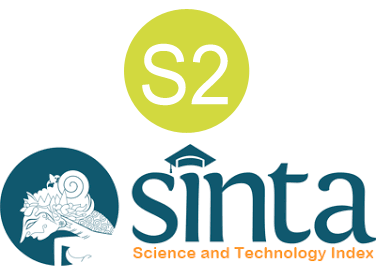From Movement to Expression: Integrating Performing Arts and German Language Instruction to Enhance University Students’ Speaking Proficiency
DOI:
https://doi.org/10.37680/qalamuna.v17i2.7459Keywords:
Creative Pedagogy; German Language; Language Learning; Movement-Based Arts; Speaking SkillsAbstract
This study examines the integration of movement-based arts into German language instruction to enhance students’ speaking skills. The “From Movement to Words” approach treats bodily movement as an expressive and cognitively enriching medium rather than a simple visual aid. The method fosters linguistic, emotional, and symbolic engagement by incorporating gestures, embodiment, improvisation, and dance. A qualitative design was employed through classroom observation, in-depth interviews, and reflective documentation to capture pedagogical effects and experiential dimensions of learning. Findings show that movement integration improves pronunciation, vocabulary retention, and fluency while strengthening confidence, emotional involvement, and creative expression. Students described the process as more dynamic, immersive, and meaningful than conventional instruction. The study demonstrates that movement-based teaching provides a holistic, engaging, and learner-centered approach that supports cognitive and affective development. This approach affirms the potential of embodied instruction to align language learning with the evolving demands of 21st-century education.
References
Agawrin, Y., Baills, F., & Prieto, P. (2023). Embodied gesture training enhances vocabulary retention and pronunciation: Evidence from multimodal instruction. Language Teaching, 56(2), 123–138. https://doi.org/. https://doi.org/10.1017/S0261444823000083
Agawrin, Y., Baills, F., & Prieto, P. (2023). Embodied gesture training enhances vocabulary retention and pronunciation: Evidence from multimodal instruction. Language Teaching, 56(2), 123–138. https://doi.org/10.1017/S0261444823000083
Böttger, H., & Höppner, B. (2024). Muscle memory and the development of speaking skills: Unveiling neuromotor foundations and methodological approaches in foreign language education. Journal of Linguistics and Language Teaching, 15(1), 45–61.
Braun, V., & Clarke, V. (2006). Using thematic analysis in psychology. Qualitative Research in Psychology, 3(2), 77–101. https://doi.org/10.1191/1478088706qp063oa
Changlong, H. (2023). The application of a multimodal teaching approach to reduce foreign language anxiety. Journal of Arts and Humanities, 12(4), 75–84. https://doi.org/10.18533/jah.v12i4.2338
Creswell, J. W., & Plano Clark, V. L. (2018). Designing and Conducting Mixed Methods Research. SAGE Publications.
Creswell, J. W., & Poth, C. N. (2018). Qualitative Inquiry and Research Design: Choosing Among. SAGE Publications.
Darmawan, K. A. (2024). The effectiveness of using the role play method in enhancing the English speaking skills of junior high school students. Journal of Education Innovation and Curriculum Development, 2(1), 34–40. https://journals.iarn.or.id/index.php/educur/article/view/436
Díaz, J., Hernández, A., & Martínez, L. (2023). Embodied strategies for public speaking anxiety. Journal of Educational Psychology, 115(4), 789–803. https://doi.org/https://doi.org/10.1037/edu0000456
Elouali, F. Z. (2023). Incorporating role play as an innovative approach to fostering EFL students’ creativity and critical thinking. Global Journal of Foreign Language Teaching, 13(2), 142–155. https://doi.org/10.18844/gjflt.v13i2.8718
Engelkamp, J., & Zimmer, H. D. (1989). Memory for action events: A new field of research. Psychological Research, 51(4), 153–157. https://doi.org/https://doi.org/10.1007/BF00309142
Faella, P. (2025). Embodied activities and collaborative learning in higher education. Frontiers in Education, 10, 987654. https://doi.org/https://doi.org/10.3389/feduc.2025.987654
García-Gámez, A. B., & Macizo, P. (2023). Gestures as scaffolding to learn vocabulary in a foreign language: A review. Brain Sciences, 13(12), 1712. https://doi.org/https://doi.org/10.3390/brainsci13121712
García-Monge, A., Guijarro-Romero, S., Santamaría-Vázquez, E., Martínez-Álvarez, L., & Bores-Calle, N. (2023). Embodied strategies for public speaking anxiety: Evaluation of the CorpOral program. Frontiers in Human Neuroscience, 17, 1268798. https://doi.org/https://doi.org/10.3389/fnhum.2023.1268798
Guerrettaz, A. M., Jusslin, K., & Korpinen, E. (2024). The use of the creative movement method in teaching foreign languages to very young language learners. European Early Childhood Education Research Journal, 32(2), 178–193. https://doi.org/https://doi.org/10.1080/1350293X.2024.2312345
Khasawneh, S. (2024). The relationship between multisensory stimulus-integrated foreign language learning and reading skills. Frontiers in Psychology, 15, 123–134. https://doi.org/https://doi.org/10.3389/fpsyg.2024.123456
Littlewood, W. (2004). The task-based approach: Some questions and suggestions. ELT Journal, 58(4), 319–327.
Liu, Y., & Smith, J. (2024). The effects of artistic physical activities on motivation, anxiety, and oral fluency in foreign language learning. Language Teaching Research, 28(3), 456–478. https://doi.org/. https://doi.org/10.1177/1362168824123456
Macedonia, M., & von Kriegstein, K. (2012). Gestures enhance foreign language learning. Biolinguistics, 6(3), 393–416.
MacIntyre, P. D., & Mercer, S. (2014). Introducing positive psychology to SLA. Studies in Second Language Learning and Teaching, 4(2), 153–172. https://doi.org/https://doi.org/10.14746/ssllt.2014.4.2.2
MacIntyre, P. D., & Mercer, S. (2014). Introducing positive psychology to SLA. Studies in Second Language Learning and Teaching, 4(2), 153–172. https://doi.org/10.14746/ssllt.2014.4.2.2
Maruf, F., Santosa, D., & Ivanov, S. (2022). Gesture-based corrective feedback in foreign language learning: Cross-cultural evidence from Indonesia, Thailand, and Ukraine. System, 106, 102848. https://doi.org/. https://doi.org/10.1016/j.system.2021.102848
Mathias, B., Andrä, C., Schwager, A., Macedonia, M., & von Kriegstein, K. (2022). Twelve- and fourteen-year-old school children differentially benefit from sensorimotor- and multisensory-enriched vocabulary training. Educational Psychology Review, 34(4), 1123–1142. https://doi.org/https://doi.org/10.1007/s10648-022-09647-4
Mathias, B., Andrä, C., Schwager, A., Macedonia, M., & von Kriegstein, K. (2022). Sensorimotor- and multisensory-enriched vocabulary training benefits school children differently by age. Educational Psychology Review, 34(4), 1123–1142. https://doi.org/10.1007/s10648-022-09647-4
Mayer, K., Macedonia, M., & von Kriegstein, K. (2021). Gestures support the multisensory learning of foreign language vocabulary. Frontiers in Psychology, 12. https://doi.org/https://doi.org/10.3389/fpsyg.2021.638558
Mir, Z., Rehman, R., & Mahmood, S. (2025). Implementing an active learning approach to promote motivation, reduce anxiety, and shape positive attitudes: A case study of EFL learners. ELT Journal, 79(1), 45–60. https://doi.org/https://doi.org/10.1093/elt/ccae001
Mondada, L. (2024). Gesture synchronization and interactional alignment in classroom discourse. Classroom Discourse, 15(2), 123–145. https://doi.org/https://doi.org/10.1080/19463014.2024.1234567
Nguyen, T. M., Vo, L. H., & Pham, Q. T. (2022). No Title. VNU Journal of Foreign Studies, 38(3), 1–15. https://doi.org/https://doi.org/10.25073/2525-2445
Paivio, A. (2007). Mind and its evolution: A dual coding theoretical approach. Psychology Press.
Papitto, G., Lugli, L., Borghi, A. M., & Gatti, R. (2021). Embodied negation and levels of concreteness: A TMS study on German and Italian language processing. Brain and Language, 220, 105026. https://doi.org/10.1016/j.bandl.2021.105026
Robinson, H., & Mills, S. (2023). The effectiveness of traditional versus kinesthetic approaches in second language acquisition: A systematic review. Language Learning Journal, 51(4), 456–478. https://doi.org/https://doi.org/10.1080/09571736.2023.1987654
Skulmowski, A., & Rey, G. D. (2018). Embodied learning: Introducing a taxonomy based on bodily engagement. Educational Psychology Review, 30(2), 541–569. https://doi.org/https://doi.org/10.1007/s10648-018-9442-5
Stavridi, M.-C. (2023). No Title. Educational Practice and Theory, 45(1), 67–83. https://doi.org/https://doi.org/10.7459/ept/45.1.05
Tang, C., Shangguan, L., Liu, L., & Mei, J. (2024). The Model and Path for Digital Cultural Tourism to Promote Rural Revitalization. Journal of Resources and Ecology, 15(3), 528–540. https://doi.org/10.5814/j.issn.1674-764x.2024.03.002
Tarasenko, R., Laktionova, O., & Petrushenko, N. (2022). The use of AR elements in studying foreign languages at the university. International Journal of Emerging Technologies in Learning (IJET), 17(3), 121–134. https://doi.org/10.3991/ijet.v17i03.28407
Tashakkori, A., & Teddlie, C. (2010). SAGE handbook of mixed methods in social & behavioral research (2nd ed.). SAGE Publications.
Usuluddin, U., Fikni, Z., Husnu, M., & Nadia, R. (2024a). Exploring the impact of kinesthetic learning strategies on EFL learners’ speaking ability. Culturalistics: Journal of Cultural, Literary, and Linguistic Studies, 8(2), 149–158. https://doi.org/https://doi.org/10.14710/ca.v8i2.24128
Usuluddin, U., Fikni, Z., Husnu, M., & Nadia, R. (2024b). Exploring the impact of kinesthetic learning strategies on EFL learners’ speaking ability. Culturalistics: Journal of Cultural, Literary, and Linguistic Studies, 8(2), 149–158. https://doi.org/https://doi.org/10.14710/ca.v8i2.24128
Wilson, M. (2002). Six views of embodied cognition. Psychonomic Bulletin & Review, 9(4), 625–636. https://doi.org/10.3758/BF03196322
Xue, S., Xue, X., Son, Y. J., Jiang, Y., Zhou, H., & Chen, S. (2013). A data-driven multidimensional assessment model for higher education English listening and speaking courses. Frontiers in Education, 8, 1198709. https://doi.org/https://doi.org/10.3389/feduc.2023.1198709
Zhang, Y., Baills, F., & Prieto, P. (2024). Embodied music training can help improve speech imitation and pronunciation skills. Language Teaching. https://doi.org/https://doi.org/10.1017/S0261444824000500
Downloads
Published
How to Cite
Issue
Section
License
Copyright (c) 2025 Rahma Rahma, Muftihaturrahmah Burhamzah, Irwan Irwan

This work is licensed under a Creative Commons Attribution-ShareAlike 4.0 International License.
Authors who submit manuscript retain its copyright and grant publisher right of first publication licensed under a Creative Commons Attribution-ShareAlike 4.0 International License (CC BY-SA 4.0) that allows others to access (search, read, download, and cite), share (copy and redistribute the material in any medium or format) and adapt (remix, transform, and build upon any material) the work for any lawful purpose, even commercially with an acknowledgement of the work's authorship and initial publication in Qalamuna: Jurnal Pendidikan, Sosial, dan Agama.











